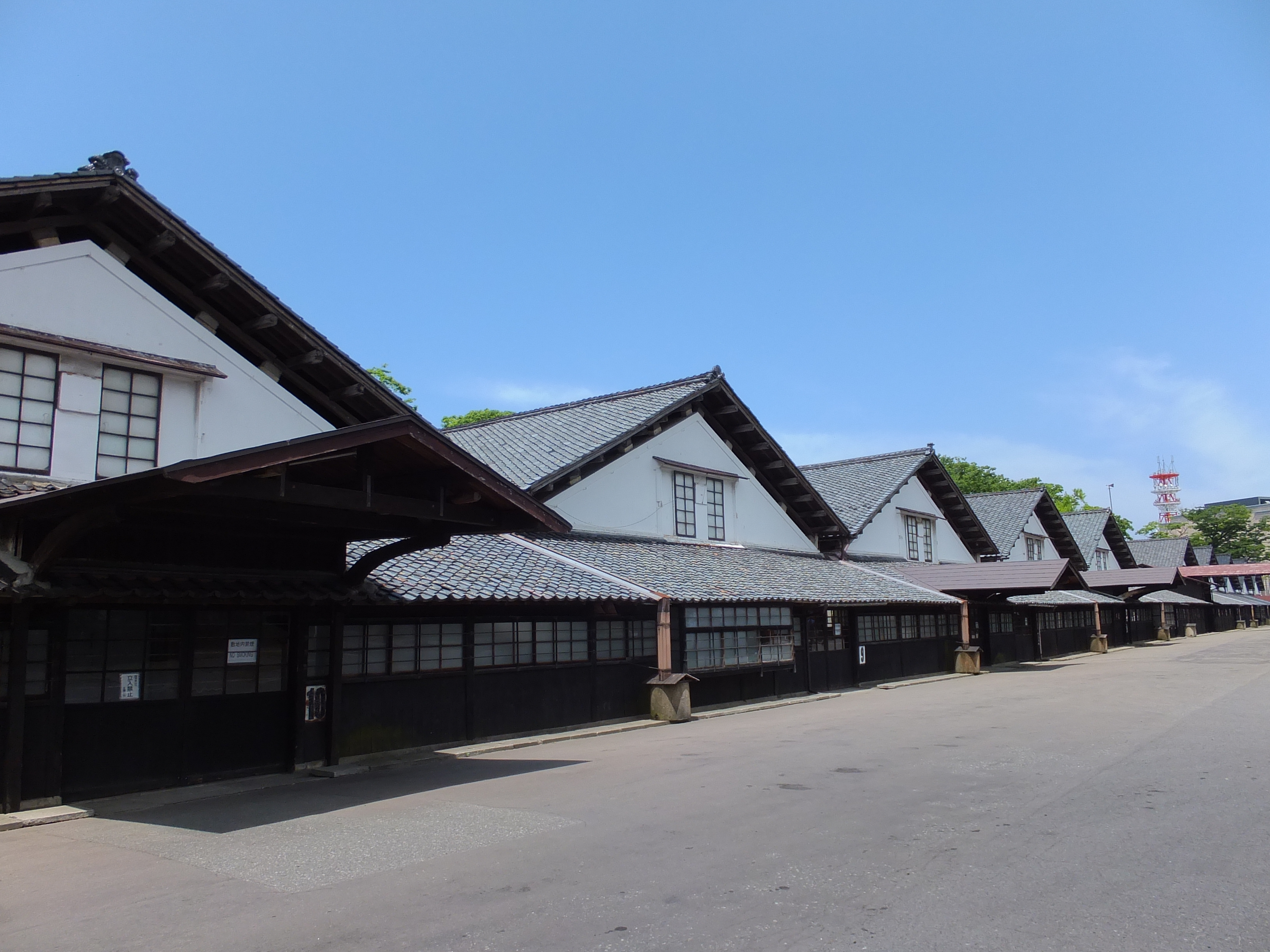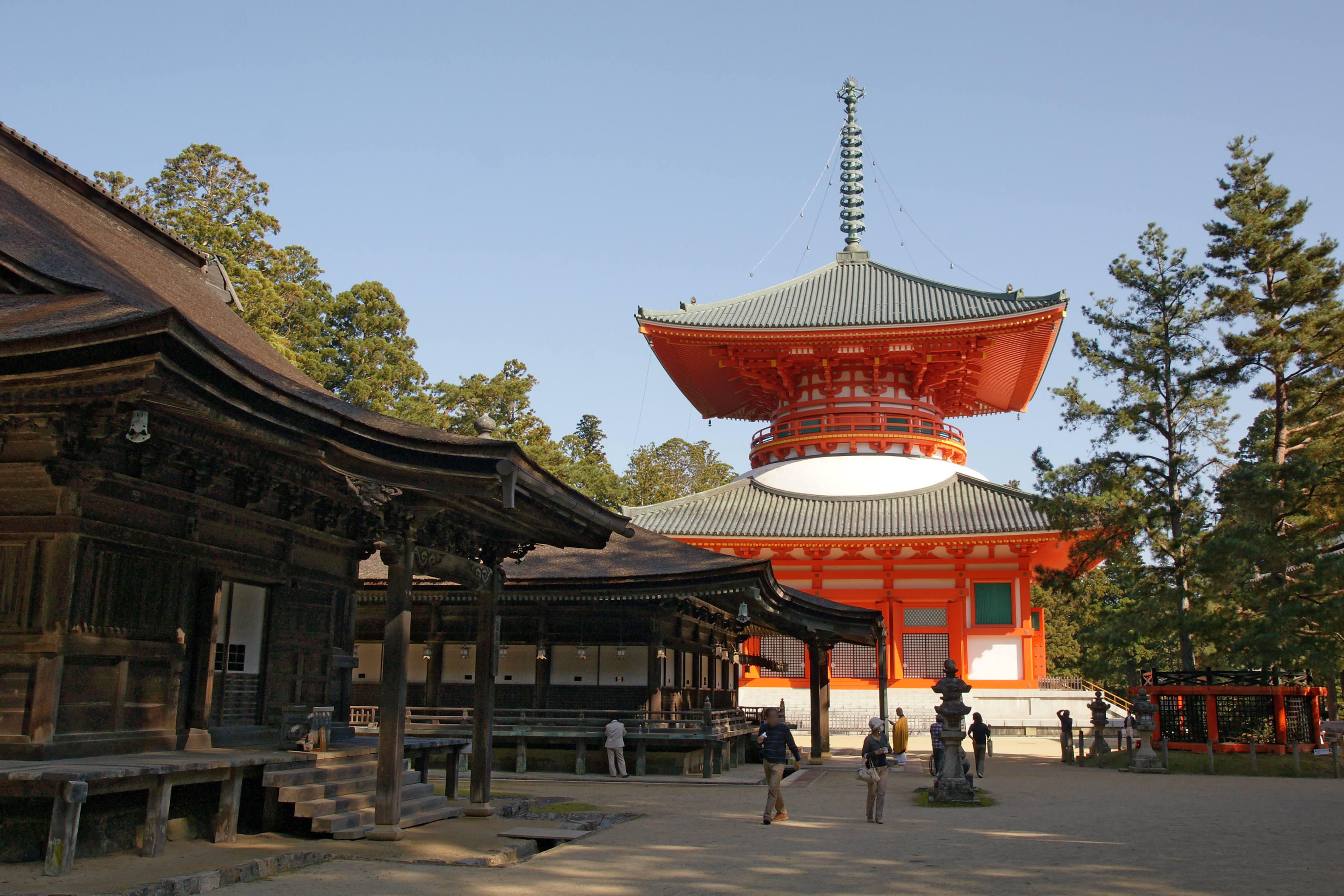|
Butsuden
Main hall is the building within a Japanese Buddhist temple compound ('' garan'') which enshrines the main object of veneration.Kōjien Japanese dictionary Because the various denominations deliberately use different terms, this single English term translates several Japanese words, among them ''butsuden'', ''butsu-dō'', ''kondō'', ''konpon-chūdō'', and ''hondō''. ''Hondō'' is its exact Japanese equivalent, while the others are more specialized words used by particular sects or for edifices having a particular structure. Kondō (Asuka and Nara periods) The term started to be used during the Asuka and Nara periods. A ''kondō'' is the centerpiece of an ancient Buddhist temple's ''garan'' in Japan. The origin of the name is uncertain, but it may derive from the perceived preciousness of its content, or from the fact that the interior was lined with gold. This is the name used by the oldest temples in the country.Iwanami Nihonshi Jiten A ''kondō'', for example Hōryū-ji's ... [...More Info...] [...Related Items...] OR: [Wikipedia] [Google] [Baidu] |
Tōdai-ji Kon-dō
is a Buddhist temple complex that was once one of the powerful Seven Great Temples, located in the city of Nara, Japan. Though it was originally founded in the year 738 CE, Tōdai-ji was not opened until the year 752 CE. The temple has undergone several reconstructions since then, with the most significant reconstruction (that of the Great Buddha Hall) taking place in 1709. Its Great Buddha Hall (大仏殿 ''Daibutsuden'') houses the world's largest bronze statue of the Buddha Vairocana, known in Japanese as '' Daibutsu'' (大仏). The temple also serves as the Japanese headquarters of the Kegon school of Buddhism. The temple is a listed UNESCO World Heritage Site as one of the " Historic Monuments of Ancient Nara", together with seven other sites including temples, shrines and places in the city of Nara. History Origins The beginning of building a temple where the Kinshōsen-Ji complex sits today can be dated to 728 CE, when Emperor Shōmu established Kinshōsen-Ji ... [...More Info...] [...Related Items...] OR: [Wikipedia] [Google] [Baidu] |
Hisashi (architecture)
In Japanese architecture the term has two meanings: # As more commonly used, the term indicates the eaves of a roof, that is, the part along the edge of a roof projecting beyond the side of the building to provide protection against the weather. # The term is however also used in a more specialized sense to indicate the area surrounding the '' moya'' (the core of a building) either completely or on one, two, or three sides.Iwanami Japanese dictionary, 6th Edition (2008), DVD version It is common in ''Zen'' Buddhist temples where it is a 1 '' ken'' wide aisle-like area and at the same level as the ''moya''. Pagodas called ''tahōtō'' also have a ''hisashi''. Open corridors or verandas under extended or additional roofs are also sometimes referred to as ''hisashi''. In temples constructed in the hip-and-gable style (''irimoya-zukuri''), the gabled part usually covers the '' moya'' while the hipped part covers the ''hisashi''. The ''hisashi'' can be under the same roof a ... [...More Info...] [...Related Items...] OR: [Wikipedia] [Google] [Baidu] |
Buddhist Temples In Japan
Buddhist temples or Buddhist monasteries together with Shinto shrines, are considered to be amongst the most numerous, famous, and important religious buildings in Japan.The term "Shinto shrine" is used in opposition to "Buddhist temple" to mirror in English the distinction made in Japanese between Shinto and Buddhist religious structures. In Japanese the first are called , the second . The shogunates or leaders of Japan have made it a priority to update and rebuild Buddhist temples since the Momoyama period. The Japanese word for a Buddhist monastery is ( ''kun'' reading) and the same kanji also has the pronunciation ''ji'' (''on'' reading), so that temple names frequently end in ''-dera'' or ''-ji''. Another ending, , is normally used to refer to minor temples. Such famous temples as Kiyomizu-dera, Enryaku-ji and Kōtoku-in are temples which use the described naming pattern. Etymology The Japanese word for a Buddhist temple was anciently also written phonetically 天良, ... [...More Info...] [...Related Items...] OR: [Wikipedia] [Google] [Baidu] |
Moya (architecture)
In Japanese architecture, the is the core of a building. Originally, the central part of a residential building was called ''omoya''. After the introduction of Buddhism to Japan in the 6th century, ''moya'' has been used to denote the sacred central area of a temple building. It is generally surrounded by aisle like areas called '' hisashi''. In temples constructed in the hip-and-gable style (''irimoya-zukuri''), the gabled part usually covers the ''moya'' while the hipped part covers the aisles. A ''butsuden's'' floor plan The drawing shows the floor plan of a typical Zen main ''butsuden'' such as the one in the photo above at Enkaku-ji , or Engaku-ji (円覚寺), is one of the most important Zen Buddhist temple complexes in Japan and is ranked second among Kamakura's Five Mountains. It is situated in the city of Kamakura, in Kanagawa Prefecture to the south of Tokyo. Fou ... in Kamakura. The core of the building (''moya'') is 3 x 3 ken wide and is surrounded on four ... [...More Info...] [...Related Items...] OR: [Wikipedia] [Google] [Baidu] |
Shichidō Garan
''Shichidō garan'' is a Japanese Buddhist term indicating the seven halls composing the ideal Buddhist temple compound. This compound word is composed of , literally meaning "seven halls", and , meaning "temple". The term is often shortened to just ''garan''. Which seven halls the term refers to varies, and 七堂 may be a misinterpretation of , meaning "complete temple".Iwanami KōjienKōsetsu Bukkyō Daijiten (広説仏教語大辞典) In practice, ''shichidō garan'' often simply means a large temple with many buildings. Etymology and history of the term in Japanese is an abbreviated form of the expression , itself a transliteration of the Sanskrit ''saMghaaraama'' (सँघाराम), literally meaning "garden for monks".JAANUS, ''garan'' A Japanese ''garan'' was originally just a park where monks gathered together with their teacher, but the term later came to mean " Buddhist temple". The word ''garan'' can be found in a record in Nihon Shoki dated 552, although no ... [...More Info...] [...Related Items...] OR: [Wikipedia] [Google] [Baidu] |
Mokoshi
In Japanese architecture , literally "skirt storey" or "cuff storey", is a decorative pent roof surrounding a building below the true roof. Since it does not correspond to any internal division, the ''mokoshi'' gives the impression of there being more floors than there really are. It is usually a '' ken'' deep and is most commonly seen in Buddhist temples and pagodas (see for example the article '' tahōtō''). The ''mokoshi'' normally covers a '' hisashi'', a walled aisle surrounding a building on one or more sides, but can be attached directly to the core of the structure (the '' moya''), in which case there is no ''hisashi''. The roofing material for the ''mokoshi'' can be the same or different (see for example's Hōryū-ji's ''kon-dō'') as in the main roof. Origin and purpose The name derives from the fact that it surrounds and hides the main building like the of a pair of pants.Shogakukan'Nihon Daihyakkasho, ''Mokoshi'' accessed on November 27, 2009 (in Japanese) Its purpo ... [...More Info...] [...Related Items...] OR: [Wikipedia] [Google] [Baidu] |
Yamagata Prefecture
is a prefecture of Japan located in the Tōhoku region of Honshu. Yamagata Prefecture has a population of 1,079,950 (1 June 2019) and has a geographic area of 9,325 km² (3,600 sq mi). Yamagata Prefecture borders Akita Prefecture to the north, Miyagi Prefecture to the east, Fukushima Prefecture to the south, and Niigata Prefecture to the southwest. Yamagata is the capital and largest city of Yamagata Prefecture, with other major cities including Tsuruoka, Sakata, and Yonezawa. Yamagata Prefecture is located on Japan's western Sea of Japan coast and its borders with neighboring prefectures are formed by various mountain ranges, with 17% of its total land area being designated as Natural Parks. Yamagata Prefecture formed the southern half of the historic Dewa Province with Akita Prefecture and is home to the Three Mountains of Dewa, which includes the Haguro Five-story Pagoda, a recognised National Treasure of Japan. History The aboriginal people once inhabit ... [...More Info...] [...Related Items...] OR: [Wikipedia] [Google] [Baidu] |
Yama-dera
: ''You may also be looking for the voice actor Kōichi Yamadera.'' , (山号 宝珠山; ''Sangō Hōshu-zan'') is the popular name for the Buddhist temple of located northeast of Yamagata City, in Yamagata Prefecture, Japan. Its main image is a ''hibutsu'' statue of Yakushi Nyōrai. The temple has been a place for pilgrimage for centuries, and is designated as both a Place of Scenic Beauty and as a National Historic Site It is located within the borders of the Zaō Quasi-National Park. The temple buildings clinging to the steep, forested, rocky hillsides are picturesque and unusual. History According to temple tradition, it was founded in 860 AD by the priest Ennin, who is better known by his posthumous name, . In 847 AD Ennin returned to Japan from studies in Tang dynasty China and in 854 AD he became the chief priest of the Tendai sect at Enryaku-ji on Mt. Hiei near Kyoto. Risshaku-ji was founded as a branch temple of Enryaku-ji by the order of Emperor Seiwa, and to ... [...More Info...] [...Related Items...] OR: [Wikipedia] [Google] [Baidu] |
Shingon
Shingon monks at Mount Koya is one of the major schools of Buddhism in Japan and one of the few surviving Vajrayana lineages in East Asia, originally spread from India to China through traveling monks such as Vajrabodhi and Amoghavajra. Known in Chinese as the Tangmi (; the Esoteric School in Tang Dynasty of China), these esoteric teachings would later flourish in Japan under the auspices of a Buddhist monk named Kūkai (), who traveled to Tang China to acquire and request transmission of the esoteric teachings. For that reason, it is often called Japanese Esoteric Buddhism, or Orthodox Esoteric Buddhism. The word ''shingon'' is the Japanese reading of the Chinese word ('), which is the translation of the Sanskrit word ("mantra"). History Shingon Buddhist doctrine and teachings arose during the Heian period (794-1185) after a Buddhist monk named Kūkai traveled to China in 804 to study Esoteric Buddhist practices in the city of Xi'an (), then called Chang-an, at A ... [...More Info...] [...Related Items...] OR: [Wikipedia] [Google] [Baidu] |






